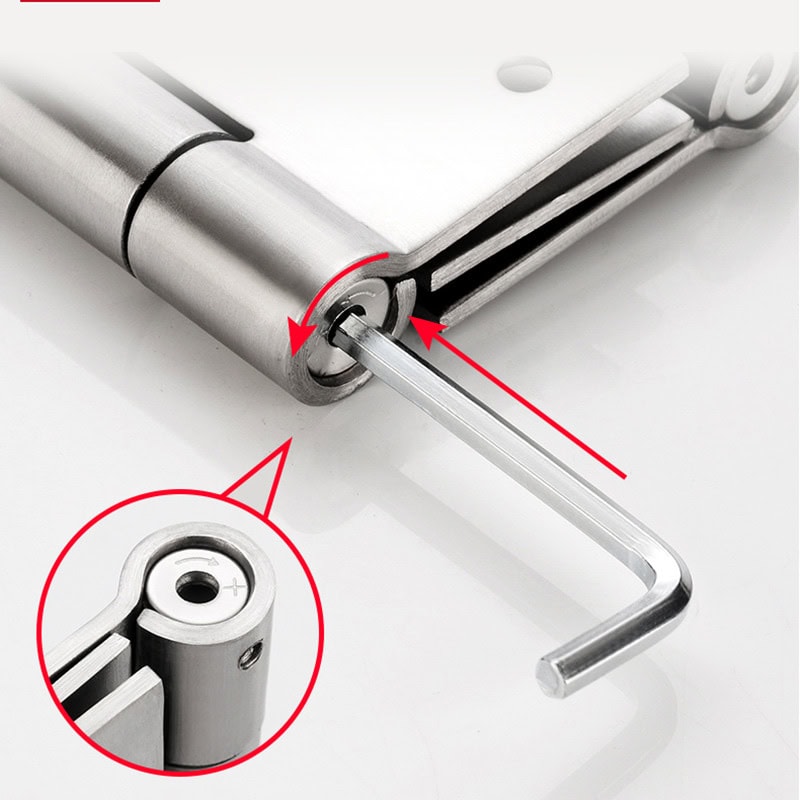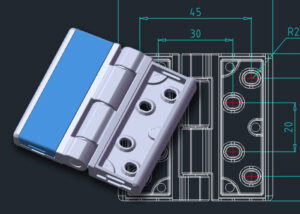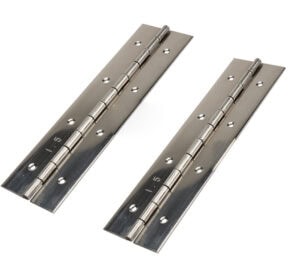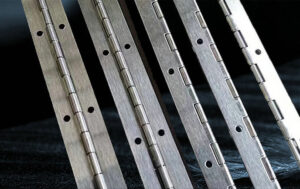A door hinge that’s too tight or too loose can create significant issues with the operation of your door. It can cause the door to rub against the frame. It can make the door feel unstable. You need to address hinge issues as soon as they occur to keep your door operating smoothly.
I’ll walk you through how to diagnose and fix the most common door hinge problems.

Identifying the Problem
Symptoms of a Too Tight Door Hinge:
- The door is difficult to close or hits the frame when closing.
- The door creates resistance when opened or closed.
- The door rubs along the edges or at the top/bottom of the frame.
Symptoms of a Loose Door Hinge:
- The door sags, wobbles, or feels misaligned.
- Gaps appear around the door frame.
- Hinge screws or hinge pins are visibly loose or coming out.
Tools Required
- Screwdriver (manual or electric)
- Drill with bits
- Wood filler or toothpicks
- Hinge pin punch and hammer
- Lubricant (e.g., WD-40)
- Sandpaper or plane
- Replacement screws
Fixing a Loose Door Hinge
Tighten Loose Screws
Loose screws are a common cause of door sagging or wobbling. Start by tightening the screws on the hinges using a screwdriver. If the screws no longer grip tightly, replace them with longer screws that can anchor deeper into the door frame for a more secure hold.
Fix Stripped Screw Holes
If the screw holes are stripped, fill them with wood filler or insert toothpicks coated with wood glue to provide extra material for the screws to grip. Once dry, reinsert the screws to secure the hinge properly.
Replace Damaged Hinge Screws
Worn or stripped screws can compromise the stability of the door. Consider replacing these with new screws, preferably longer or thicker ones, for better support.
Tighten the Hinge Pin
Check the hinge pin for looseness. If the hinge pin is coming out, use a hammer and a hinge pin punch to tap it back into place securely. If the pin is worn, replace it with a new one to prevent further movement.
Use a Shim for Adjustment
If the door sags even after tightening the screws, place a thin shim behind the hinge to slightly reposition the door. This can help balance the door and prevent further sagging.
Fixing a Door Hinge That is Too Tight
Adjust the Hinge Placement
To fix a door that is too tight, loosen the screws slightly and adjust the hinge position. Re-tighten the screws after the hinge is properly aligned to ensure smooth door movement. Removing any excess paint or dirt from the hinge area can also help with smoother operation.
Lubricate the Hinge
Hinges that are too tight often create friction. Apply a small amount of lubricant, such as WD-40, to the hinge pins and the moving parts of the hinge. Removing the hinge pin, cleaning it, and reapplying lubricant can improve the door’s movement.
Sand or Shave the Door Edge
If the door rubs against the frame, sand or shave down the edges slightly to prevent friction. Focus on the areas where the door sticks, using fine sandpaper for minor adjustments or a plane for larger issues.
Loosen a Stiff Hinge
If the hinge is too stiff, loosening the screws just a bit can reduce tension without making the hinge too loose. This should improve door movement without compromising its stability.
Special Cases and Common Issues
Sagging Door
A sagging door can often be fixed by tightening the screws or using longer screws in the top hinge. Shims can also help lift the door back into alignment.
Hinge Pin Problems
If the hinge pin frequently loosens or falls out, consider replacing it with a new, more secure pin. If a hinge pin is damaged, it can cause the door to wobble or fail to stay in place.
Door Rubbing Against the Frame
If the door rubs against the frame, check the hinge alignment and reposition the hinge or sand the door edge as necessary to prevent damage to both the door and the frame.
Preventative Maintenance Tips
- Regularly check and tighten hinge screws to prevent loosening over time.
- Periodically lubricate the hinges with household oil to keep them functioning smoothly.
- Inspect the alignment of your door and make minor adjustments before issues worsen.
These simple maintenance steps can help ensure that your door hinges—whether they’re Butt Hinges, Piano Hinges, or Heavy Duty Hinges—remain in optimal condition.
Conclusion
Fixing a door hinge that is too tight or loose is a straightforward process that can greatly improve the functionality and lifespan of your door. By tightening screws, adjusting hinges, and performing regular maintenance, you can prevent more severe problems from developing over time. Addressing these issues promptly will keep your doors operating smoothly for years to come.
You may be interested in:




